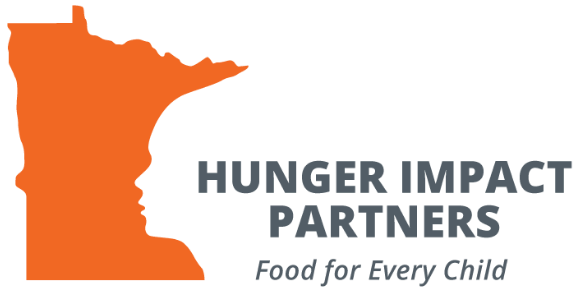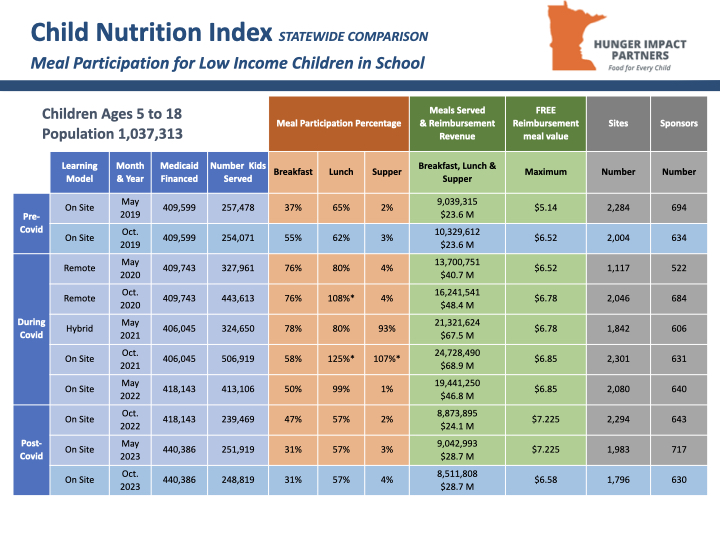Results
How well are we feeding our kids?
Resources made a difference, and in high-poverty schools the pandemic exacerbated educational inequities.
- We worked with 22 school nutrition departments to add innovative programs, expand menu choices, and pursue more sustainable practices. These sites had a 20 percent increase in meals provided.
- We worked with 11 school districts to bridge the cultural divide with multicultural meal components in multi-day boxes that were relevant to specific Hispanic or immigrant student populations.
These sites had a 13 percent increase in meals provided.
We do expect to make progress on closing the meal gap for Minnesota children, with year-on-year high-impact.
Our school administrators, nutrition directors, childcare center directors, community program operators, community-based learning programs, WIC clinics and others know that the long-term value of participating in federal child nutrition programs is essential. COVID changed how meals are provided and that has put stress on the meal delivery channels no one ever anticipated.
We have worked to strengthen the meal programs for needy families and protect federal meal program integrity and accountability so that the meals go to the intended children. Unfortunately, the disproportionate negative impacts of the pandemic on the most vulnerable learners have persisted.
After an incredibly challenging period, most students are beginning to settle back into their pre-pandemic school routines and take advantage of school meal programs but some segments – primarily low-income students and students of color -are falling further behind their peers.
We need significant policy changes to support schools and community-based organization to help students make-up lost academic ground, along with access to support systems and daily nutritious meals.
Our advocacy work will be a priority driving systemic changes to improve all child nutrition programs post-COVID.

